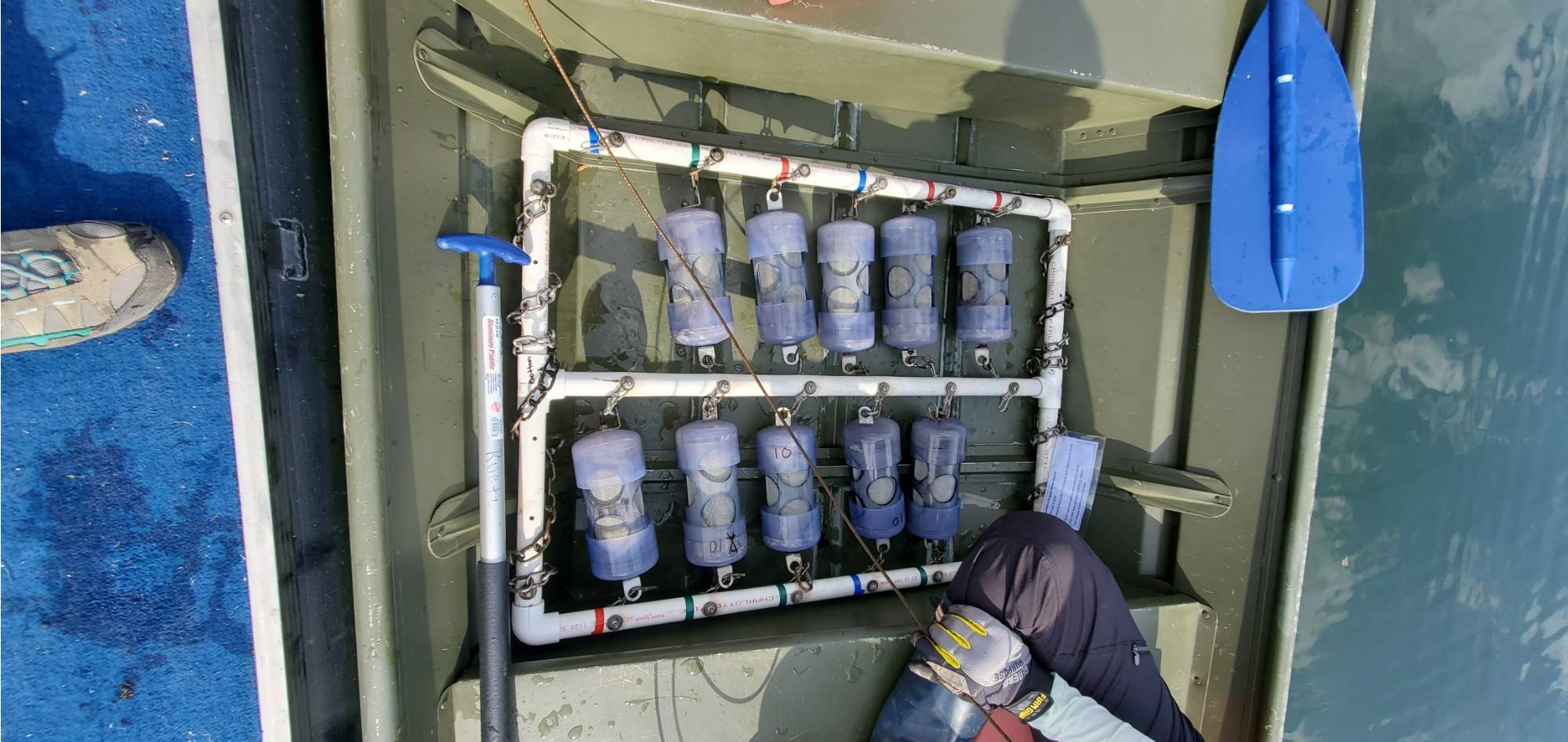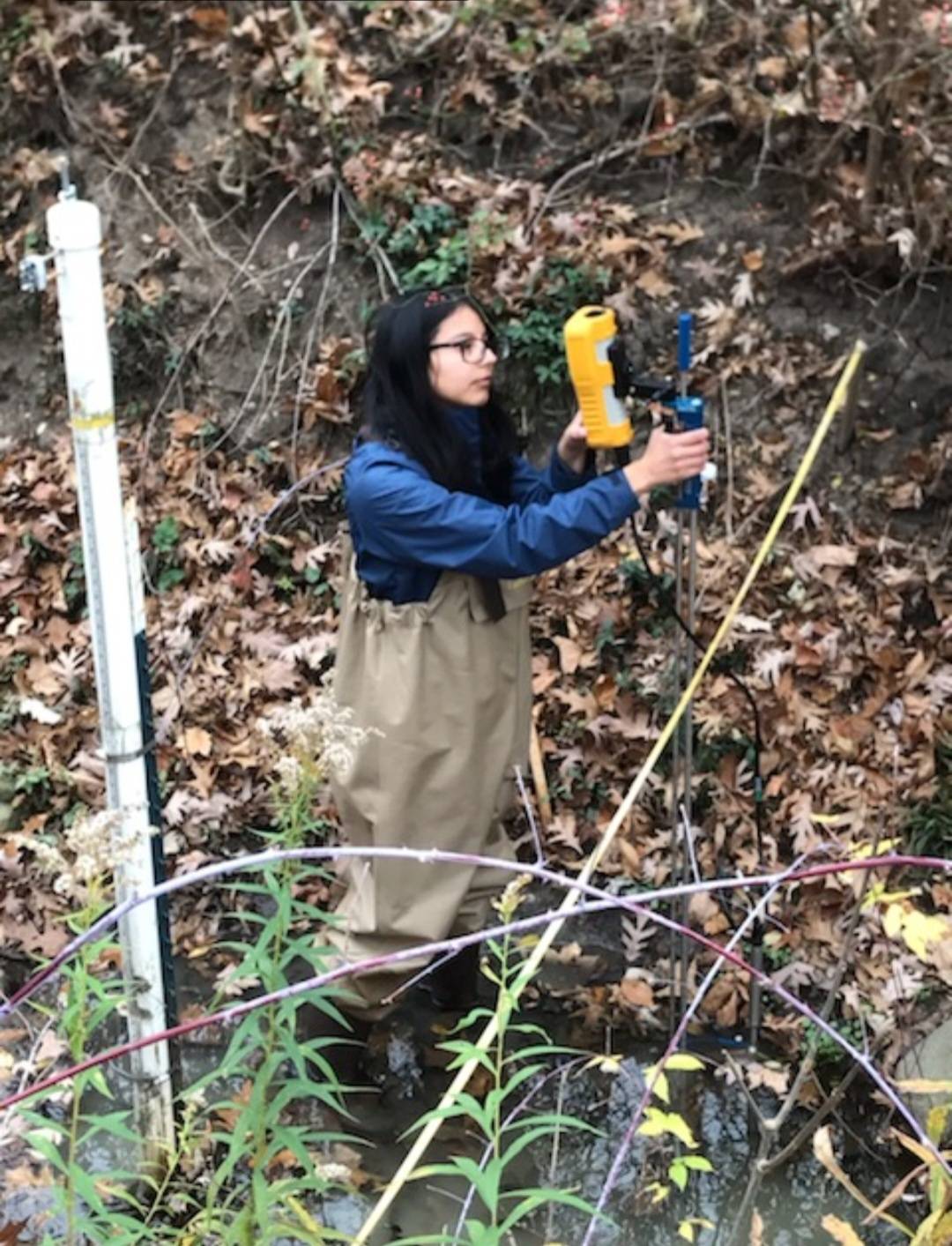Church Lake Microplastic Biofilms
Background
Stormwater runoff transports non-point source pollutants, including sediment, road salt, nutrients, pathogens, and microplastics (MPs), from land to water bodies. Plastics' resistance to degradation leads to environmental hazards such as obstruction of water flow, entanglement of aquatic animals, and ingestion-induced starvation. This study investigates the role of stormwater in transporting MPs from a highway into Church Lake, a salt-impacted, partially meromictic, and urbanized lake.

Microplastic sampling array.
Project Summary
Water and sediment samples from Church Lake and its unnamed tributary were collected throughout 2022-2023 to characterize the types and concentrations of MPs. Major spikes in MP concentration were observed during winter in the lake and during fall stormflow in the tributary, with counts ranging from 61 to 16,390 particles per liter.
To further understand the ecological impact, MPs were incubated in the lake’s epilimnion and hypolimnion to promote biofilm formation on polypropylene (PP) and polyethylene terephthalate (PET) polymers. After incubation, MPs were subjected to controlled lab conditions to simulate different environmental scenarios. The experimental design involved two treatments: MPs were initially incubated in the low phosphorus (P), low salinity, high light epilimnion, and then placed in either ambient epilimnion water or hypolimnion water, and vice versa. Results indicated that environmental factors rather than polymer type significantly influenced phosphorus dynamics and microbial community composition. Biofilms on MPs grown in the hypolimnion showed a trend of soluble reactive phosphorus (SRP) and total phosphorus (TP) uptake, while those grown in the epilimnion increased SRP/TP concentrations in the lab.
These findings suggest that biofilm biomass on MPs in the hypolimnion is limited by high salinity or low light, whereas epilimnetic biofilms are phosphorus-limited. The plastisphere’s impact on phosphorus cycling in Church Lake is minimal, with the initial microbial community composition playing a critical role in determining biofilm responsiveness to environmental changes. The study highlights the need for incorporating road runoff management into infrastructure design to mitigate the environmental impact of MPs on freshwater systems.

Graduate student Paris Velasquez monitoring stream flow.
Funding for this project was provided by the Allen and Helen Hunting Research and Innovation Fund, the Grand Valley State University Presidential Research Grant, and the Steinman Environmental Education Fund at the Community Foundation for Muskegon County.
Contacts
Paris Velasquez, Graduate Researcher: [email protected]
Al Steinman, Thesis Advisor: [email protected]

